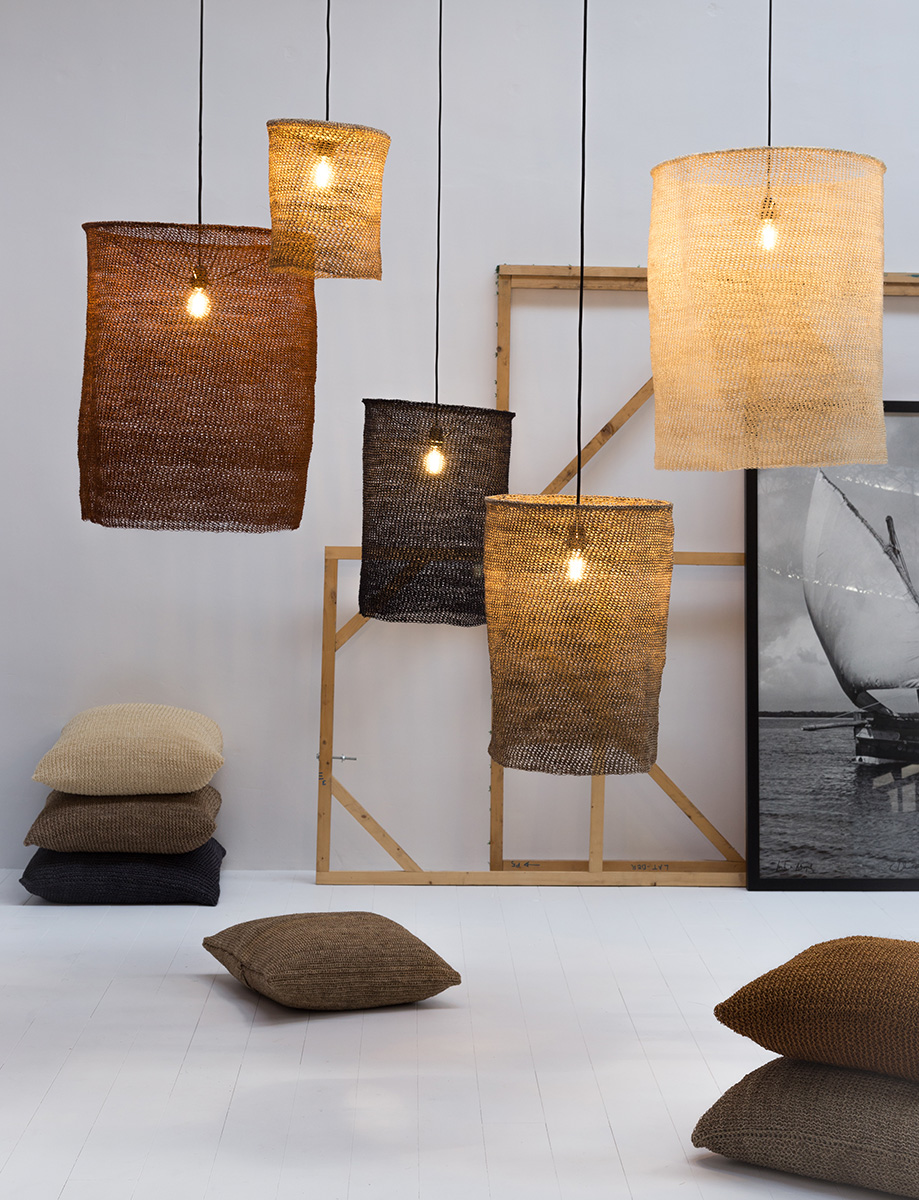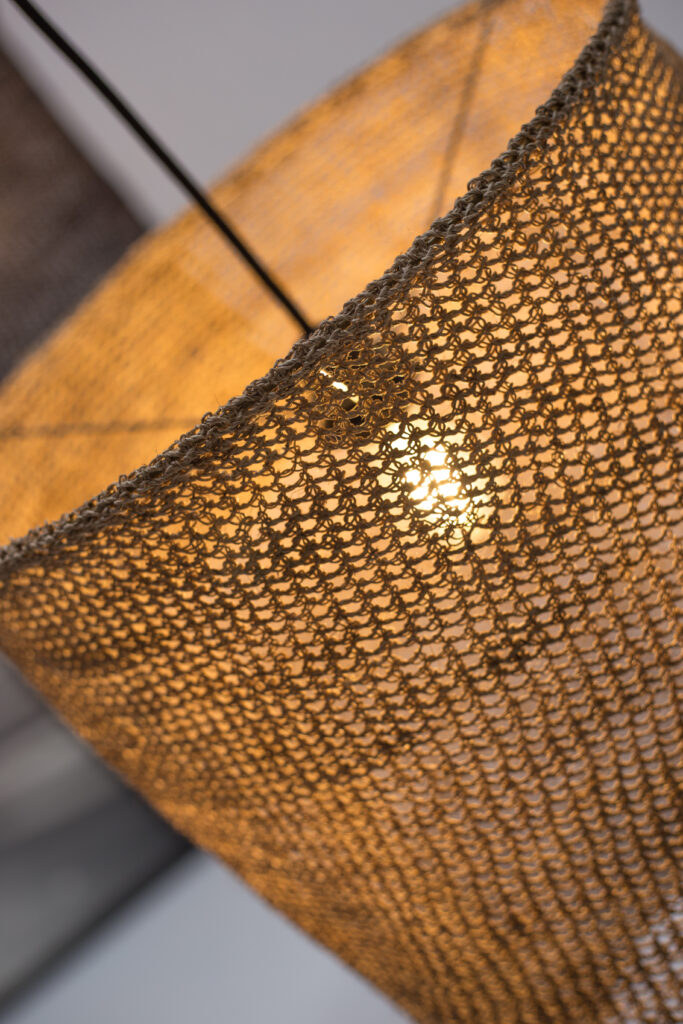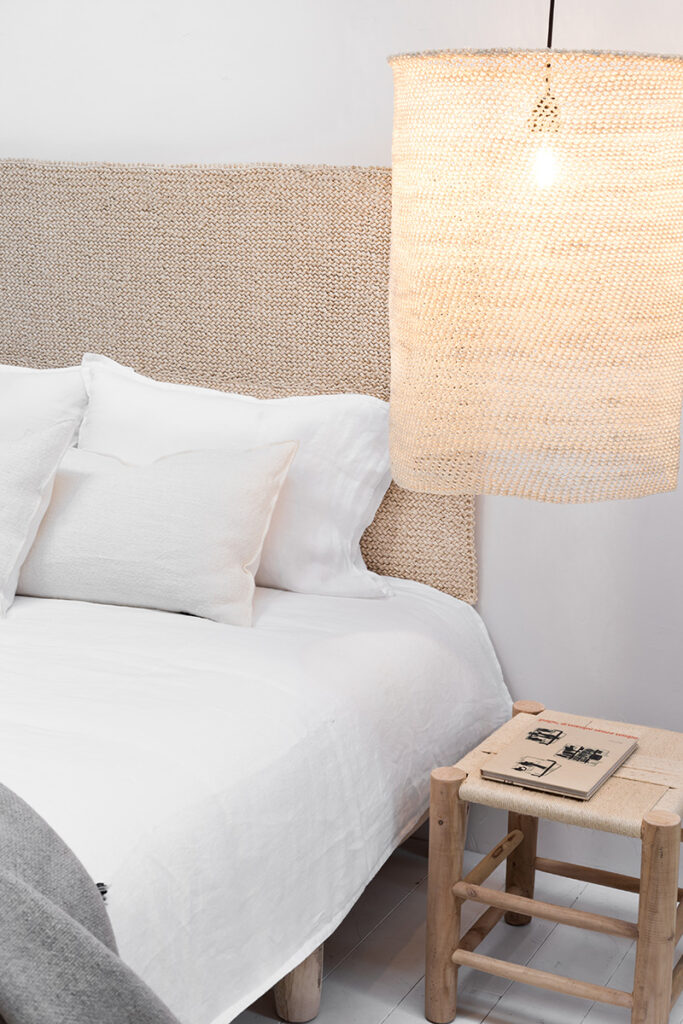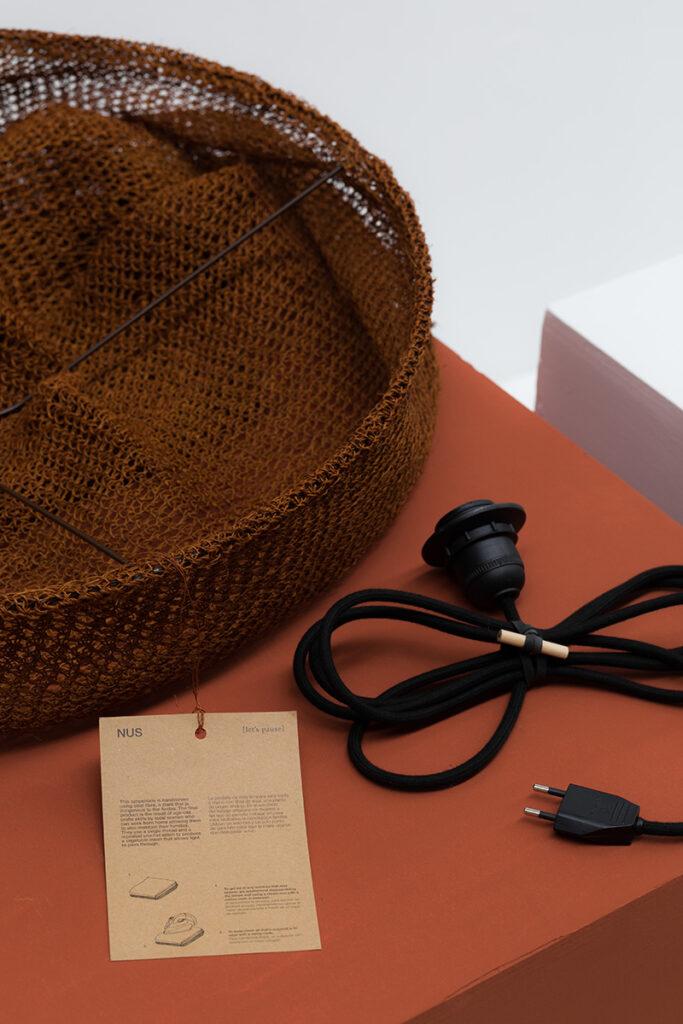[:es]Lámparas NUS, la belleza y calidez de la fibra de sisal tejida con ganchillo[:en]NUS lamps, the beauty and warmth of crocheted sisal fibres[:]
[:es]
Let’s Pause teje en ganchillo la fibra de una planta andina, el fique, para crear una colección de lámparas cálidas, orgánicas, que celebran la artesanía y respetan el trabajo de las mujeres que las crean.
En el origen, una planta suculenta de pencas carnosas, el fique (Furcraea andina), del que se extrae una fibra dura, fina y brillante con la que se han fabricado hamacas, redes y sacos de café. En el proceso, a partir de este hilo fibroso, el trabajo experto de mujeres que lo tejen con ganchillo siguiendo los diseños elegantes de Let’s Pause. Y, en el otro extremo, como resultado, las lámparas NUS iluminando con suavidad a través de mallas que conservan su original esencia natural y que cuentan la historia de mujeres respetadas y valoradas.
La nueva colección de lámparas NUS de Let’s Pause es un homenaje a la artesanía sabia y canta a la sencillez: un solo hilo y un punto de crochet son suficientes para obrar la magia de una celosía vegetal que permite el paso matizado de la luz y un juego sutil de sombras. El tamaño grande y mediano están disponibles en cuatro colores distintos (blanco, marrón claro, cobre y negro) y el pequeño solo en blanco moreno. Todos ellos aúnan la firmeza de la fibra vegetal con la leve ondulación orgánica del ganchillo. A modo de malla, la pantalla cae como una falda al estar apenas sujeta a un armazón de aluminio del mismo tono.

NUS significa “nudo”, ya que se consigue anudando la fibra del fique en un proceso de fabricación que busca unir culturas, agrupar a mujeres, retomar el camino interrumpido de antiguas artesanías y técnicas. El motor de Let’s Pause ha sido, desde el nacimiento de la firma, el amor y la pasión por lo hecho sin prisas, con las manos y con materiales que respetan los ciclos naturales y las personas. Cada pieza se crea con mimo y tiene un carácter único que se refleja en su atractiva y solo aparente imperfección. La leve irregularidad del ganchillo de fique libera a la lámpara de cualquier rigidez y la dota, al contrario, de movimiento, vida.

El fique se extrae de la planta de la que toma el nombre por un proceso de “peinado” que elimina la parte exterior de la hoja y deja solo la fibra. De manera natural, esta fibra es blanca en las hojas altas, aún tiernas, y de un blanco moreno o marrón claro en las bajas, las que ya han madurado y casi tocan el suelo. Las lámparas de NUS se encuentran en estos dos colores naturales y, además, en un cobre, como de arena mojada o tierra recién arada, y en un gris antracita oscuro, parecido a la piedra volcánica. Estos dos colores se obtienen tiñendo la fibra blanca.

Por otro lado, las opciones se amplían con los tres tamaños distintos de las lámparas. La pantalla más grande tiene un diámetro de 60 cm y una altura de 75 cm; la mediana, un diámetro de 42 cm y una altura de 58 cm; y la pequeña, un diámetro de 25 y una altura de 31 cm.

Para tejerlas, las mujeres emplean entre 12 horas y dos días, dependiendo del tamaño. Se les ofrece la posibilidad de trabajar en casa para que les resulte más fácil mantener el “nudo” familiar y una coordinadora controla los plazos de entrega y supervisa la labor realizada.
La conjunción del trabajo artesano, a partir de un material tan natural, con un diseño muy contemporáneo hace que las lámparas de NUS se adecúen tanto a vestíbulos de hoteles y casas arquitectónicas de espacios diáfanos como a mesas de comedor y rincones recogidos a los que aportan su mensaje de calidez y de regreso a la naturaleza.

Al desembalar las lámparas, para eliminar las posibles arrugas, recomendamos aplicar el vapor de una plancha a través de un trapo de algodón.
Para mantenerlas limpias, es suficiente con lavarlas con un trapo húmedo. Luego, se secan con el vapor de la plancha.
Cada pantalla se entrega con un cable textil de cordón negro de 2,5 metros, un portalámparas negro y un florón negro de aluminio para su colocación en el techo.

[:en]
Let’s Pause crochets the fibres of the fique plant of the Andes in order to create a collection of warm and organic lamps, that celebrate the age old crafts and skilled labour of the women that make them.
It all starts with this succulent plant with its fleshy stalks, fique (Furcraea andina) from which a hardy fibre can be extracted, the refined and glistening plant with which traditionally hammocks, nets and coffee bags have been manufactured over the years. During the process the expert hands of the women weave the fibrous thread of the fique using the crochet technique, following the elegant lamp designs of Let’s Pause. The series of lamp shades NUS softly illuminate through a mesh, that retains its original natural essence and tells the story of these highly respected and valued women.
The new collection of NUS lamps by Let’s Pause is an homage to the old age craft and evokes simplicity: a single thread and crochet stitch are enough to create the magic of a vegetable weave that allows the nuanced diffusion of light throwing suggestive shadows. The big and average sizes are available in four colour options (white, light brown, copper and black), while the small size is only offered in light brown. All of them combine the strength of the vegetable fibre with the light organic weave of the crocheting work. In the style of a mesh, the shade falls like a skirt which is delicately held by an aluminium structure of the same tone.

The word NUS means knot, reflecting the knotting of the fique fibre in a manufacturing process that seeks to join cultures, bring women together, as well as looking for a way to breathe new life into age old crafts and techniques. Since the very beginning the motivation behind Let’s Pause involvement has been a love and passion for things made over time by the human hand with materials that respect natural cycles and the people who make them. Each of the pieces is created with care and has a unique character reflecting the lamp’s attractive and imperfect expression. The subtle irregularity of the crochet stitches frees the lamp from any rigid formality, lending it in fact movement and life.

Fique is extracted from the plant of the same name using a combing process that eliminates the external part of the leaf just leaving the fibres. Without any treatment this fibre is naturally white when sourced from the higher leaves, which are normally more tender while the lower leaves are more off white in colour or light brown because they are more mature, almost touching the ground. The NUS lamps are expressed in these two organic colours as well as a copper shade like wet sand or recently ploughed earth together with an anthracite dark grey hue, that evokes a volcanic stone. The latter colours are obtained by dying the white fibre.

The other feature of this collection is the range of sizes with three different options for the lamps. The largest shade has a diameter of 60 cm and a height of 75 cm; the middle size is of 42 cm in diameter and 58 cm in height; while the smallest is 25 cm in diameter and 31 cm in height.
For the crocheting process the women require between 12 hours and two days, depending on the size. The option of working from home is given to each of them if that makes it easier to hold the family together, a coordinator looks after deliveries and supervises the work carried out.
The combination of raw and natural materials crafted with contemporary designs, ensures that the NUS lamps are equally suitable for entrance halls of hotels and reception spaces as well as architectural houses, such as dining areas and other rooms, where their warm and valuable message regarding returning to nature can be appreciated.

To get rid of any wrinkles that may appear we recommend disassembling the lamps and using a steam iron with a cotton cloth between.
For day to day cleaning all that’s needed is a damp cloth to wipe. Then just let dry with a steam iron.
Each lamp shade is delivered with a black textile cable of 2.5 meters, a black lamp holder and a black aluminium canopy for ceiling installation.
 [:]
[:]